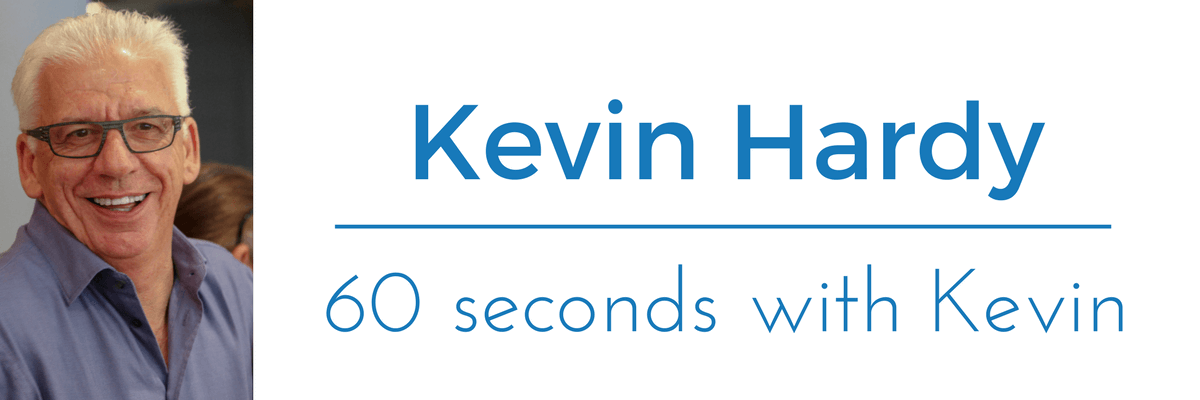60 seconds with Kevin Hardy – the first 100 days
06 Feb 2018

I don’t know what the text books say about what you should do in the first 3 months /100 days after you take up your promotion to a new executive role, but here are a few thoughts gleaned from many meetings with senior executives and how they have gone about it. This is no text book list of points for you to follow slavishly.
It is an amalgam of different approaches that you might use as a guide that you pick and choose from, add your own steps, or, decide on your own unique approach based on the context, the people and the priorities you inherit. Whilst you will have a set of “riding instructions” you have to decide what your final approach or plan will be. Remembering of course that a plan is just a plan and when it hits the reality of what is actually happening on the ground then it will change because people, priorities and politics are involved.
Whatever you do, it will require a high level of listening and communication skills. Be clear about 3 things that you will focus on not 30. You will not change the world in 3 months. You are taking stock, getting to know people, and, setting the scene for what you want to achieve over 3 years.
CONTEXT
- Knowing the context of the organisation/function is critical. What do you need to find out about the external environment, the culture, the stakeholders and interest groups/clients, the politics (small “p” and big “P”) at play?
- Can you map the strength and relevance of those people and groups who you have to be engaged with and what is the quality of those relationships/networks/connections?
- What is the reputation of the organisation/function?
- Does the organisation have a clear strategic direction/sense of purpose?
- Is there a plan that operationalises that vision or core direction?
- Is there a set of values that mean something to those who work for you or is it just a set of words that most people could not enunciate or act out
- Do people buy into the plans and how would you find out?
- Does the plan match the “riding instructions” that you have been given
- If you “sniff the breeze” that blows through the organisation or your part of it, does it tell you anything?
- If you check the noticeboards and listen to the general “chit chat” what does that tell you about how healthy the culture is and how committed people are?
LEADERSHIP
- You are the leader so you have to put your stamp on your “reign”. Be clear about your intentions and style and how you like to handle conflict, clients, stakeholders, meetings and so on
- First impressions last so what you say and how you say it is important
- Find out about your direct reports by talking to them. Move around and talk to people so you get a sense of what you have been given to lead
- Is there a performance feedback system and is it used and valued?
- I go back to the last points under context. As a leader you need to listen, smell, taste the organisation so that you understand it
PEOPLE
- People are the wildcard in the pack. You have to find out about them and the best way is to get some intelligence from others, gather your own intelligence and make your own judgement call. Sometimes when you are told negative things about individuals it may not be true under your leadership
- Some will try to impress you. Some will have got on very well with the previous leader. Just watch that actions and words actually align
- Did one of your direct reports also compete for the role? If so how will you address that with them?
- How will you take stock of your executive team and the people performance of the organisation as a whole?
- What are the key signals that you want to get across about what you stand for as a leader?
- Suspend judgement about individuals until you have made your own assessment
- At some point you have to decide who you want “on the bus” and who you don’t but this is not likely to happen in the first 3 months

